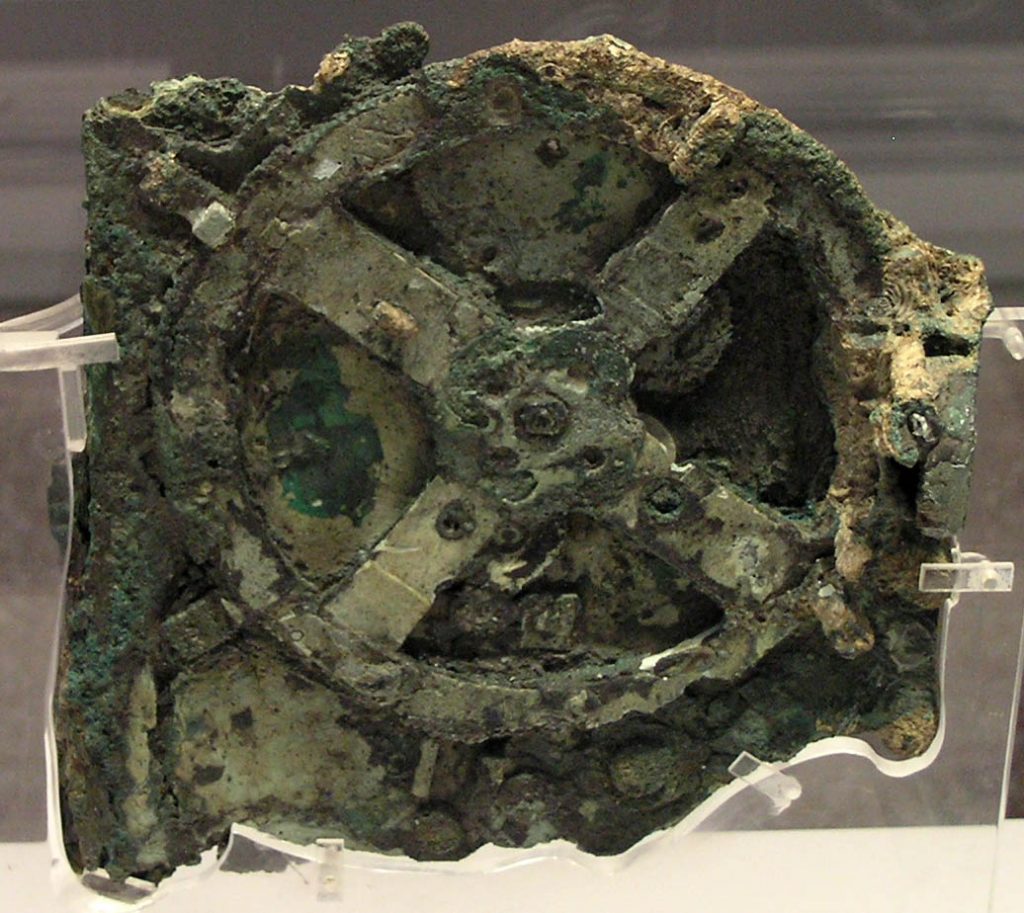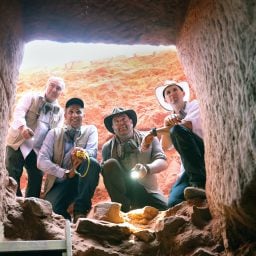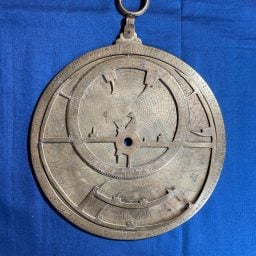Returning to the screen as a swashbuckling archaeologist for the fifth and final time in Indiana Jones and the Dial of Destiny, Harrison Ford was moved to tears at Cannes last month by the audience reaction to one of his most famous film characters, calling it “indescribable”. But what exactly is the titular “Dial of Destiny” that Indy is searching for in his latest adventure?
Joined by his goddaughter Helena Shaw (played by Phoebe Waller-Bridge), Jones is in pursuit of a mysterious object based on the Antikythera mechanism, an actual antiquity that now resides in the collection of the National Archaeological Museum in Athens.
Plenty mysterious in its own right, the ancient Greek device rewrote the history of technology when it was discovered in 1901, as part of a shipwreck found by sponge divers off the coast of the Greek island Antikythera, between Crete and Peloponnese. Believed to have been used by ancient astronomers to track the movement of celestial bodies and predict eclipses, the object has been described as the oldest known analog computer.

Teddy (Ethann Isidore), Indiana Jones (Harrison Ford) and Helena (Phoebe Waller-Bridge) in Lucas-film’s Indiana Jones and the Dial of Destiny. Photo: ©2023 Lucasfilm Ltd. & TM. All Rights Reserved.
In the film, we learn that during World War II, Jones and his colleague Basil Shaw (played in flashbacks by Toby Jones) prevented Nazi scientist Jürgen Voller (Mads Mikkelsen) from gaining possession of the powerful device. In classic blockbuster fashion, the curious antiquity is actually a powerful astronomical tool that allows its possessor to travel across time.
The main action of the movie takes place a quarter-century later, when the U.S. government has enlisted former Nazis to win the space race, and Voller, who remains on the hunt for the Antikythera, is in the employ of NASA. His character is partly inspired by actual ex-Nazi Wernher von Braun, who really did work on the Apollo moon mission.
Directed by James Mangold (Girl, Interrupted; Walk the Line; 3:10 to Yuma), Dial of Destiny arrives in theaters June 30. It has received mixed reviews from critics, but Vulture’s Bilge Ebiri has called it “too entertaining to dismiss.”
What is certainly too fascinating to dismiss is the history of the actual Antikythera mechanism, around which the film’s fictional plot revolves.
Here are 5 questions about the mysterious device answered, for fans of archaeology and antiquity on the big screen and in real life.
What exactly is the Antikythera mechanism?
A hand-powered orrery, or model of the solar system, the Antikythera mechanism has been described as the oldest example of an analog computer. Various dates have been offered for its making, ranging from 205 B.C.E. to 87 B.C.E, since the shipwreck the object was found in is said to have occurred between 70 and 60 B.C.E.
No evidence of a similarly complex astronomical clock would appear in the archaeological record for well over a millennium. Tantalizingly, some experts speculate that such a complex and high-quality object may have had as-yet-unknown forerunners.
Who made it?
It is widely believed that ancient Hellenic scientists designed the mechanism, since it is based on theories of astronomy and mathematics hatched by the Greeks in the second century B.C.E.
Some evidence suggests it came from the island of Rhodes: the shipwreck also yielded up vases in the style of those created on the island, where Stoic philosopher Posidonius ran an academy. Supporting this theory is the fact that the astronomer Hipparchus came from Rhodes, and in fact the mechanism uses his ideas about the motion of the Moon.

The Antikythera mechanism. Via Wikimedia Commons.
How did it work?
The device, measuring just over a foot high, is badly deteriorated after spending centuries underwater and is separated into at least 82 fragments. It features at least four gears and numerous inscriptions, leading some researchers to suggest that it once had some 37 interconnected bronze gears that allowed it to track the moon and the sun through the Zodiac, foretell eclipses, and model the moon’s irregular orbit.
A hand crank, now lost, was linked to the largest gear. It caused the interlocking gears inside to rotate, simultaneously calculating the position of the Sun and the Moon decades in advance, as well as indicating the moon phase, eclipse, and calendar cycles—and maybe even give the locations of the five planets the Greeks knew about.
How did it come to light in the first place?
It was one of the treasures recovered from the wreck of a Greek ship off the island of Antikythera, first identified by sponge divers in 1900. In the first major underwater archaeological expedition, the Greek Royal Navy extracted hundreds of artworks from it, including three life-sized marble horses and a seven-foot-tall statue of Hercules, along with jewelry, coins, glassware, and other treasures, all of which went to the Archaeological Museum. They were all on display there in 2012-2014.
When did its technical complexity come to light?
Initially appearing to be nothing more than an undistinguished block of wood and metal, the device languished for decades in storage. An archaeologist claimed that it was an astronomical clock when he identified a gear in the mechanism in 1902, but experts doubted that such a complex mechanism could date from so early.
It wasn’t until a Yale University science historian published a paper on the mechanism in 1974 that its function became widely known. Two years later, oceanographer Jacques Cousteau pulled hundreds more artifacts from the wreck, as well as human remains.
Because of challenges presented by its depth and location, much of the site remains unexplored. Nonetheless, divers have been going back to the site for more than a decade in hopes of finding more parts of the mechanism.
More Trending Stories:
A British Couple Actually Paid Nearly $250,000 to Remove a Banksy Mural From Their Building Due to the ‘Extremely Stressful’ Upkeep
Archaeologists in Hungary Have Uncovered the Remains of an Ancient Roman Doctor Alongside His Surgical Toolkit
The World’s First A.I.-Generated Statue, Cobbling Together the Styles of Five Celebrated Sculptors, Has Landed in a Swedish Museum
Meet the Young Collectors Calling the Shots at the Guggenheim, a Highly Placed Art Worlder’s Anti-Woke Tweets, and More Art World Gossip
An Extraordinary Wristwatch Belonging to the Last Emperor of China Just Sold for $6.2 Million, Setting Multiple Auction Records
A Sculpture Depicting King Tut as a Black Man Is Sparking International Outrage
Archaeologists Have Found a 3,000-Year-Old Bakery in Armenia, After Realizing a Layer of Ash Was Actually Wheat Flour
Why the Supreme Court’s Decision in the Andy Warhol Copyright Case Shows the Dangers of a Sympathy Vote
An Exhibition of Taylor Swift’s Stuff Has Just Opened at the Museum of Arts and Design. Here Are 5 Must-See Displays, Swifties











